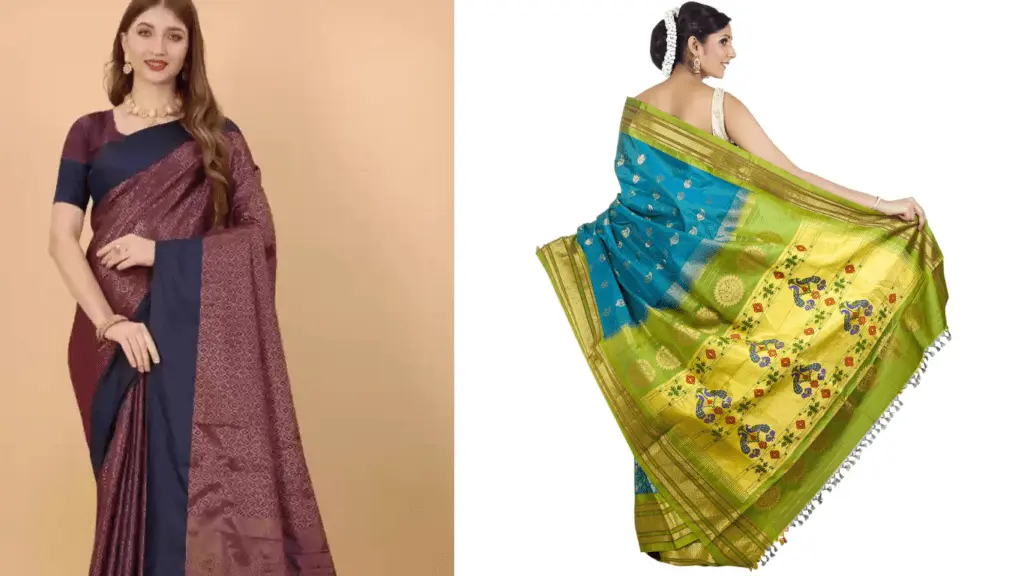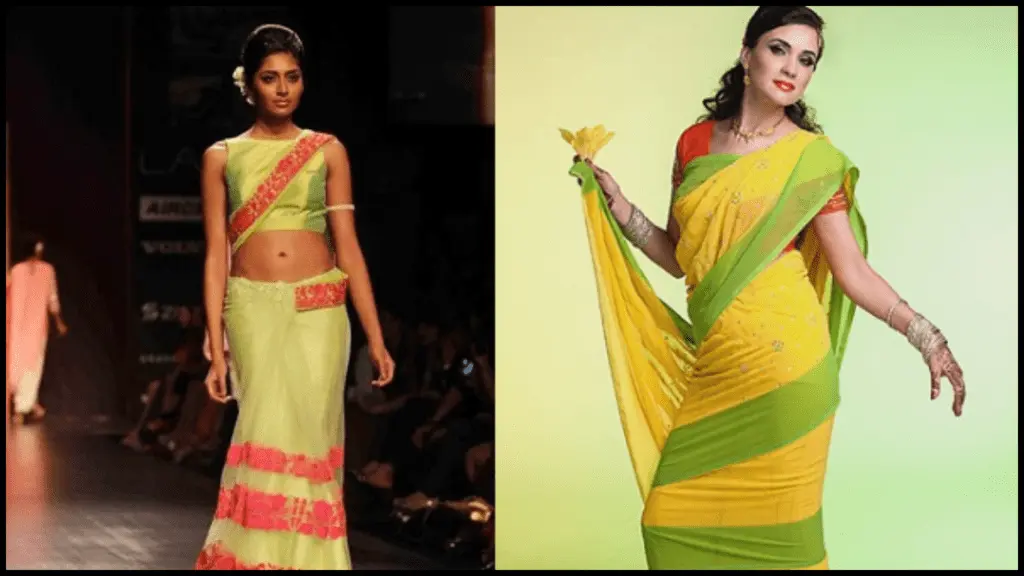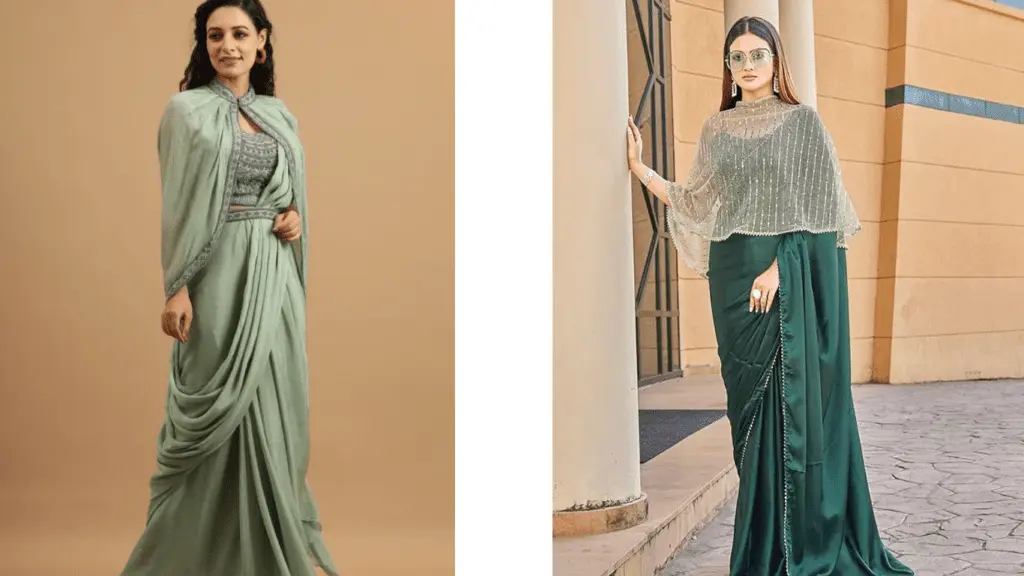The elegance of traditional sarees character itself to the outline of a woman’s body, increasing her natural beauty and allowing her to emanate an aura of confidence. The version of sarees goes beyond attractiveness; it is a vehicle for connecting from generation to generation. That proceeds down through the ages, a family inheritance saree carries not only the threads of its fabric but also the stories of its operator.
The saree becomes a way through which the heritage of culture and tradition is conserved and passed on. Most women prefer to wear sarees during festivals like Diwali and Durga Puja, the festival dedicated to Goddess Durga, vibrant colored sarees adorn women and bring back the joy and charm of the occasion.
Moreover traditional saree gives the proper and fine timeless beauty which reflects the craftsmanship, cultural significance and proper natural beauty, a saree is not more than just draping over your body but it actually shows the symbol of tradition, grace and rich heritage and expresses the different regions of India. In the generation of changing trends in another day, the saree is the one which remains constant and suitable for women of all ages and body types.
Some Important Tips Of Traditional Sarees
- Right fabric.
- Good quality petticoat.
- Choosing a matching or contrasting blouse.
- Styles for perfect draping.
- Pinning techniques.
- Pleating the saree.
Saree As A Symbol Of Empowerment
One of the most empowering features for women is the saree, and hairstyle which is the ability to celebrate the natural beauty of every woman. Moreover, Western attire is focused on body types and it has been made on prioritizing certain body types. But when we talk about the saree it welcomes all shapes and sizes of women to feel comfortable and confident. The saree is loose and soft in fabric that drapes very elegantly all over the body, which attracts femininity without any unrealistic beauty perceptions.
Types Of Sarees
There are 5 different types to drape saree
Basic Open Plates Saree Drape

This is an open plate draping style of saree, in which the saree is pleated and tucked at the waist and draped over the left shoulder. This kind of draping every woman prefers because it is a very effortless draping style. In this type of saree women feel confident and each and every detail of this draping style suits every woman.
Front Plates Draping Style

The front plate’s draping style of saree involves creating neat and clean pleats at the front of the saree, and then it gets tucked into the waistband. This style accent the front portion of saree plates neatly and tucked it on the left shoulder, allowing the pleats to not to fall over the lower body.
Mumtaaz Saree Draping Style

Mumtaaz saree draping style basically comes from an inspiration of the old movie. It is a different kind of draping. In which it comes with the look of front plates around the body. Women who choose Mumtaaz saree draping style to give them a unique look in a party and it will also look attractive, which gives the retro and vintage vibes.
Cape Style Saree Draping

Cape draping saree style that pairs a saree with a cape or jacket, which gives a modern twist to the whole look of your traditional attire. The cape is draped over the blouse, accompanying the saree’s drape and increasing its features. This style offers creativity, allowing the operator to experiment with different fabrics and decorations for the cape.
Belted Saree Drape Style

The belted saree draping style includes adding a belt around the waist while wearing a saree, it serves a beautiful modern and fancy twist to the look. The belt effortlessly grabs the waist, creating a defined outline and gracefully adding a touch of smoothness to the body. This style allows for creativity, the belt is chosen to match the saree or contrast with it to give it a bold statement.
Conclusion
The saree draping style is not just a way of wearing any garment; it’s a timeless beauty form that shows the stunning tradition, and cultural beauty With countless draping styles of saree comes from different regions of India, each saree drape tells their unique story and history also reflects the dynamic customs and personality of its wearers. Although, it’s an adaptable garment that accepts women of all shapes, sizes & skin types.












